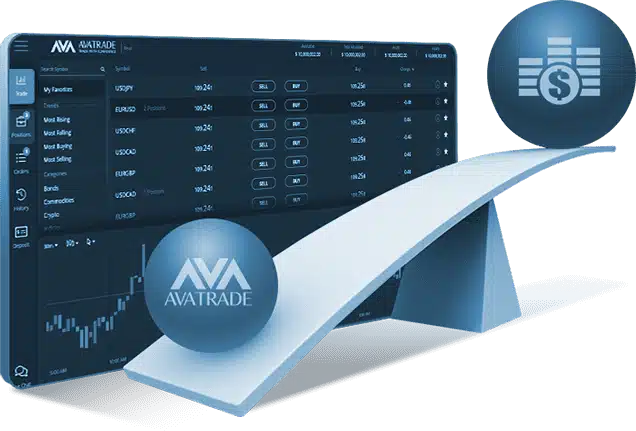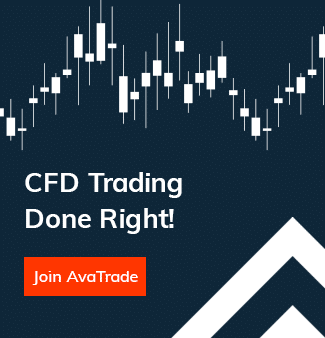Leverage Trading

- What is Leverage Trading?
- Why Trade with Leverage
- Example of Leverage Trading
- Margin Call
- Leverage Trading with Friedberg Direct
What is Leverage in Trading?
Leveraged trading, also known as margin trading or trading on margin, is a system which allows the trader to open positions much larger than his own capital. The trader needs only to invest a certain percentage of the position, which is affected by many factors and changes between instruments, brokers and platforms.
Leverage trading is popular amongst traders and brokers, and is a common trading tool. “Leverage” usually refers to the ratio between the position value and the investment needed, and “Required Margin” is the percentage of the position required of the trader to open it.
Open a leveraged trading account with Friedberg direct today!
Why Trade with Leverage
There are several advantages to trading with leverage, so much so that is has become a common tool in the forex trading world.
- Minimizes the capital the trader needs to invest. Instead of paying the full price for an instrument, the trader can pay only a small portion of it. For instance – if a position’s value at the time of opening is $3,000; instead of paying the full amount, he can employ a leverage of 20:1 – meaning for every $20 in actual value he will be requested to invest $1 of his own capital. This means that for this position he will need $150 to open it.
- Some instruments are relatively cheap, meaning almost every trader can trade them easily. However, some are considered more prestigious and, based on their traded frequency and other factors, are more expensive. Instead of investing large amounts in order to take part in their market, one can use leverage and enjoy the fluctuations in the price of those prestigious instruments.
- While leverage trading, or margin trading, requires less capital, which can be a major advantage for many traders, it also comes with a loss risk. As one can gain much more than his initial investment, losses can occur on the same scale. It is important to keep track of opened position and apply stop loss and other market orders in order to prevent large scale losses.
Example of Leverage Trading
For example, the price for one Troy ounce of Gold is $1,327. The trader believes the price is going to rise and wishes to open a large buying position for 10 units. The full price for this position will be $13,270, which is not only a large amount to risk, but many traders do not possess such amounts.
With – for example – 20:1 leverage, or 5.00% margin, the amount will decrease substantially. This means that for every $20 of value in the position, the trader will need to invest $1 out of his account, which comes to $663.5 only.
Margin Call
To employ leverage, one needs to have sufficient funds in his account to cover possible losses. Each broker has different requirements, and Friedberg Direct requires a Retail Trader to possess Equity of at least 10% over his Used Margin.
Going back to the example above, the position’s original value is $13,270; with leverage the trader invested $663.5 of his capital.
To open his position, he needs to have a starting equity (his balance plus profits on successful open positions minus losses on unsuccessful open positions) before opening the position of (100+10)% x $663.5 = $729.85 – his ‘required’ margin.
If we ignore the spread, for the moment, the split-second the position is opened, the trader’s equity is divided into $729.85 of used margin and his balance (equity minus used margin) of (required) free margin. Because of the spread, however, a position will always open with a loss equal to the spread. Therefore, we must add that amount to the required margin in order for the position to open.
Once the position is open, equity begins to change following the profit/loss of the position (and remember – that profit/loss is magnified by the leverage level). The moment the free margin level drops below 10% x used margin, the system will begin to close out positions – losing ones first – until free margin is once again 10% higher than used margin. This is called a ‘margin call’.
Leverage Trading with Friedberg Direct
Friedberg Direct offers many instruments, and each has a different leverage which can also change based on the trading platform chosen by the trader. On MetaTrader 4 and Metatrader 5 you can enjoy an up to 20:1 leverage.
It is important to make sure of the leverage on the specific platform before you commence your trades; and to avoid a margin call, always make sure you have enough equity in your account’s balance so you can continue your trades undisturbed.
Frequently Asked Margin Questions
Open a margin trading account with Friedberg direct today!
Leveraged Trading FAQs
- Can leverage cause my account go negative?
Because Friedberg Direct uses margin requirements that are considerably higher than in other jurisdiction around the world and the use of a margin call system your risk of excessive trading losses that exceed the total balance of your account is minimized, but it is not eliminated completely. During a period of extreme volatility, it is possible that a position could move so rapidly against you that it is not possible to liquidate a losing position in time to keep your account balance from going negative. This could also occur, for example, over a weekend when the market opens Sunday evening and the instrument that you are trading opens at price considerably different than it closed at on Friday, this is commonly referred to a price gap. To avoid this, we strongly recommend that you manage your use of leverage wisely.
- Are there any disadvantages of leverage?
Leverage is a very complex financial tool and should be respected as such. While it sounds fantastic in theory, the reality can be quite different once traders come to realize that leverage doesn’t only magnify gains, but it also magnifies losses. Any trade using leverage that moves against the trader is going to create a loss that is much larger than it would have been without the use of leverage. This is why caution is recommended until more experience with leverage is gained. This can lead to a longer and more prosperous trading career.
These FAQs, comments/analysis do not take into consideration your individual personal circumstances and trading objectives. Therefore, they should not be considered as a personal recommendation or investment advice. They are intended for educational purposes only. Past performance is not indicative of future results. There is no guarantee that the contents or instructions will result in profits or not result in losses.







